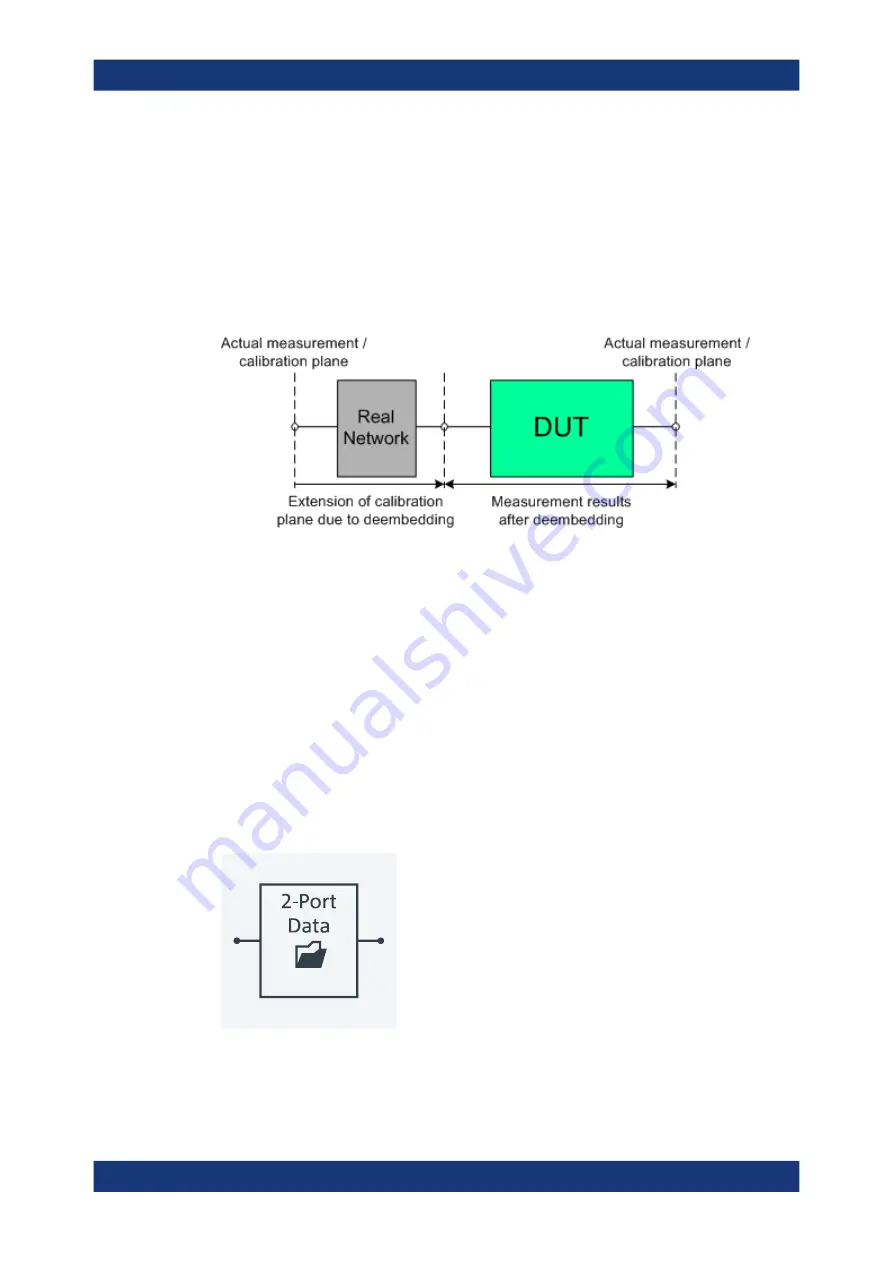
VNA concepts and features
R&S
®
ZNL/ZNLE
285
User Manual 1178.5966.02 ─ 19
which are not directly accessible because they are inseparably connected to other
components, e.g. for MMICs in a package or connectors soldered to an adapter board.
To be numerically removed, the real network must be described by a set of S-parame-
ters or by an equivalent circuit of lumped elements. Deembedding the DUT effectively
extends the calibration plane towards the DUT ports, enabling a realistic evaluation of
the DUT without the distorting network. Deembedding can be combined with length off-
set parameters; see
Chapter 9.6.1, "Offset parameters"
The simplest case of single port deembedding can be depicted as follows:
9.6.2.3
Circuit models for 2-port networks
The lumped element 2-port transformation networks for (de-)embedding consist of the
following two basic circuit blocks:
●
a capacitor connected in parallel with a resistor
●
an inductor connected in series with a resistor
The 2-port transformation networks comprise all possible combinations of 2 basic
blocks, where either one block represents a serial and the other a shunt element or
both represent shunt elements. In the default setting the resistors are not effective,
since the serial resistances are set to 0 Ω, the shunt resistances are set to 10 MΩ and
the shunt inductances are set to 0 Siemens.
The first network is defined by its S-parameters stored in an imported two-port Touch-
stone file (
*.s2p
). No additional parameters are required.
The following networks are composed of a serial capacitance C or inductance L (as
seen from the test port), followed by a shunt L or C. They are named
Offset parameters and de-/embedding






























